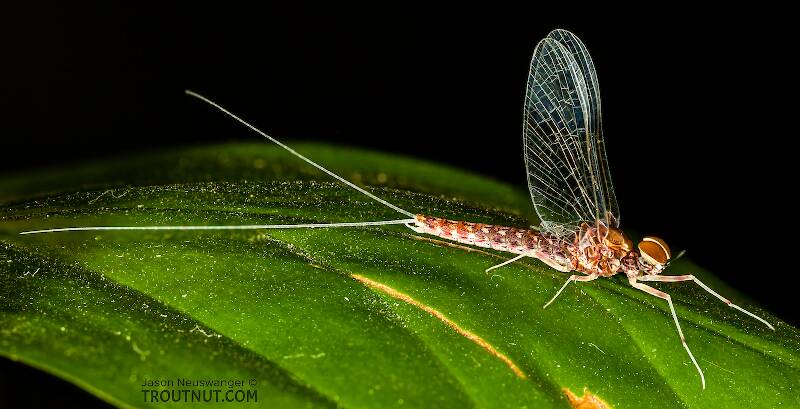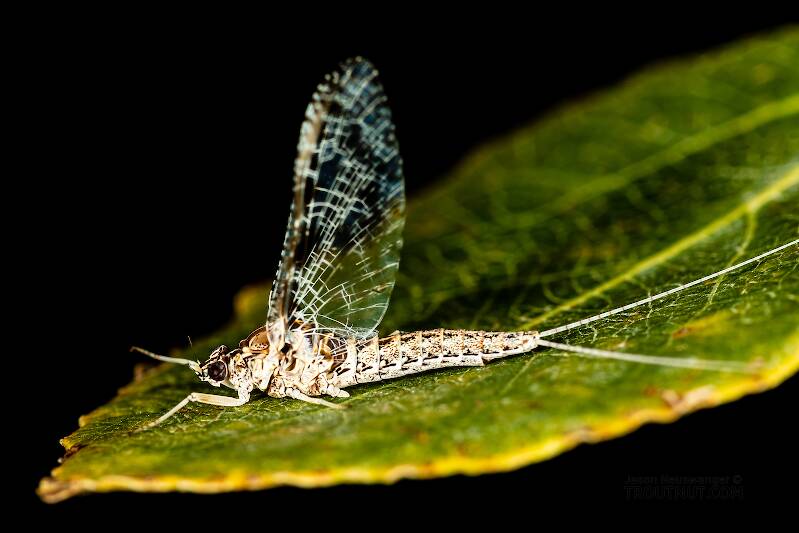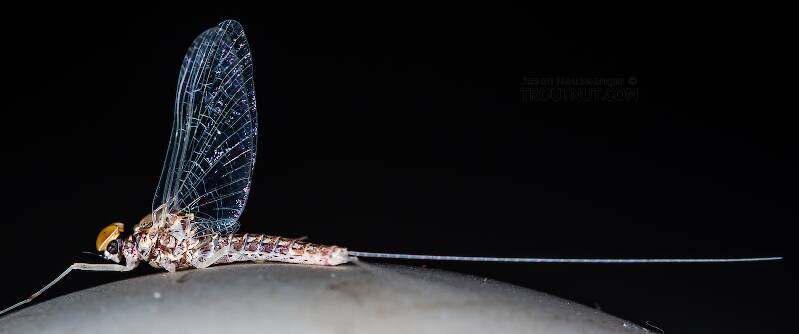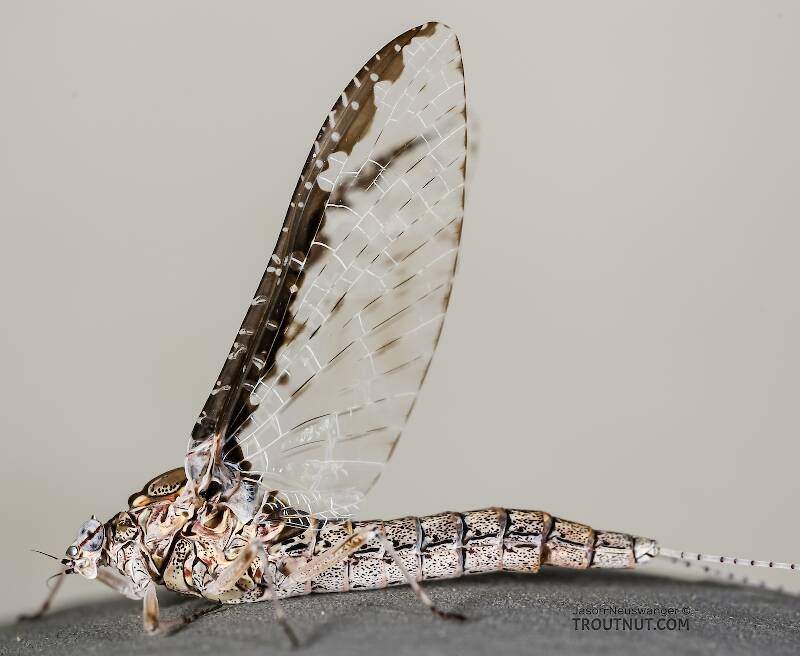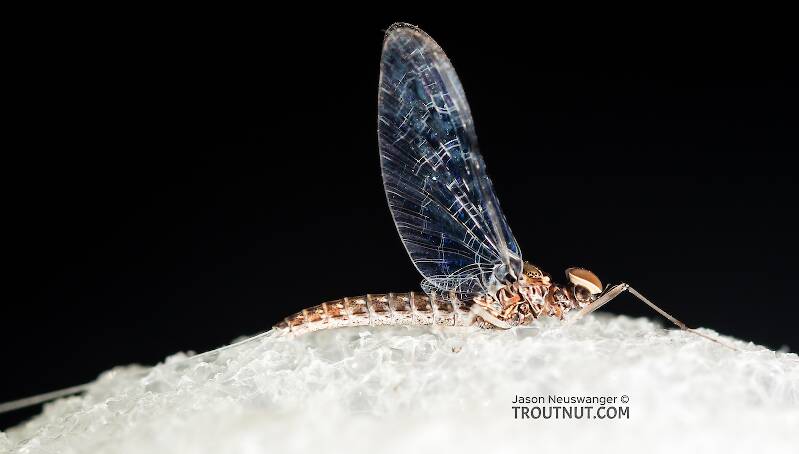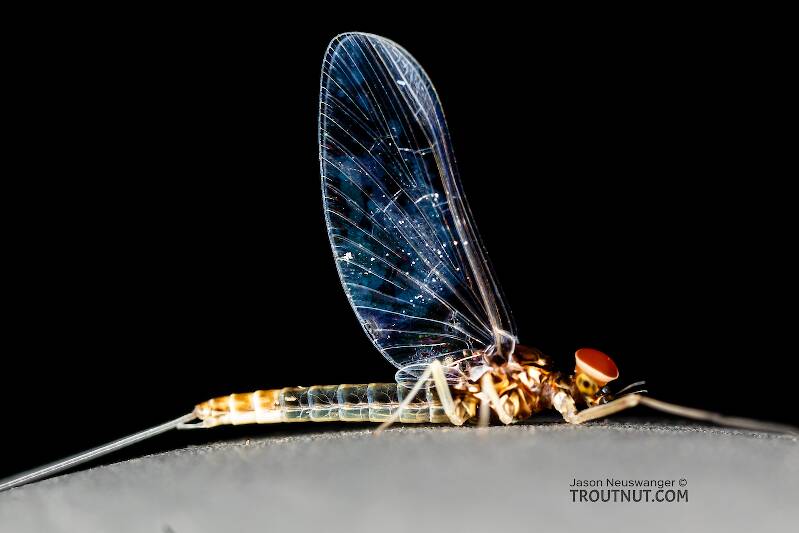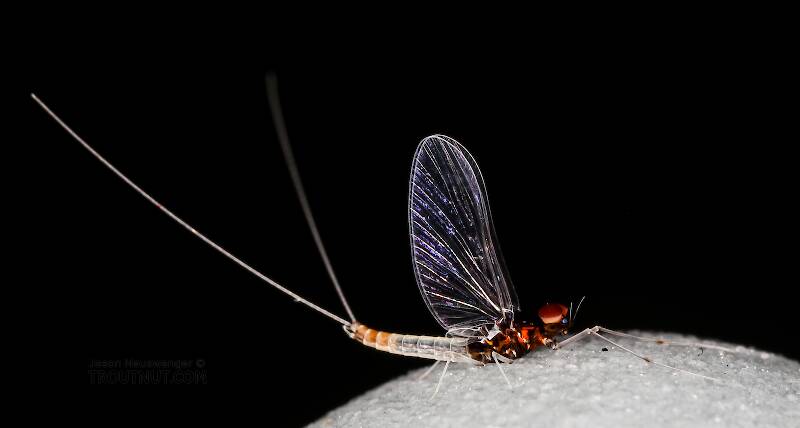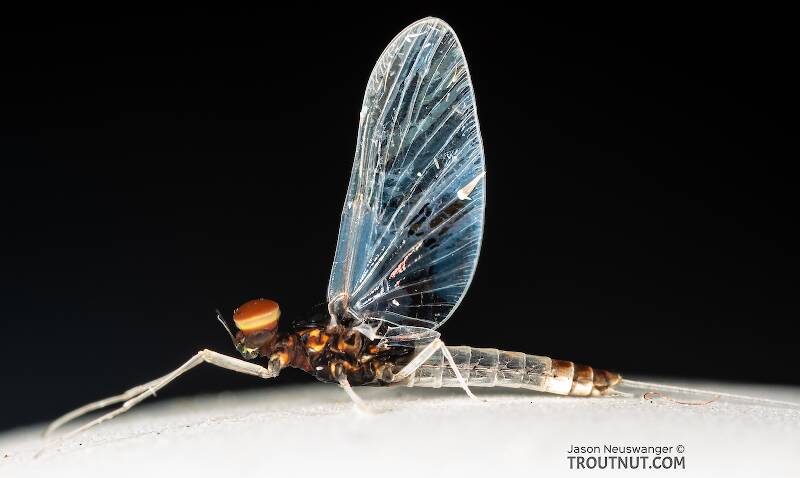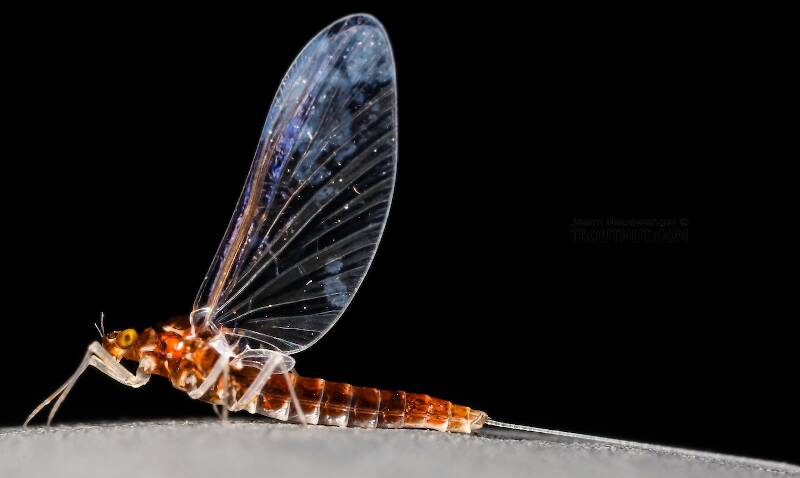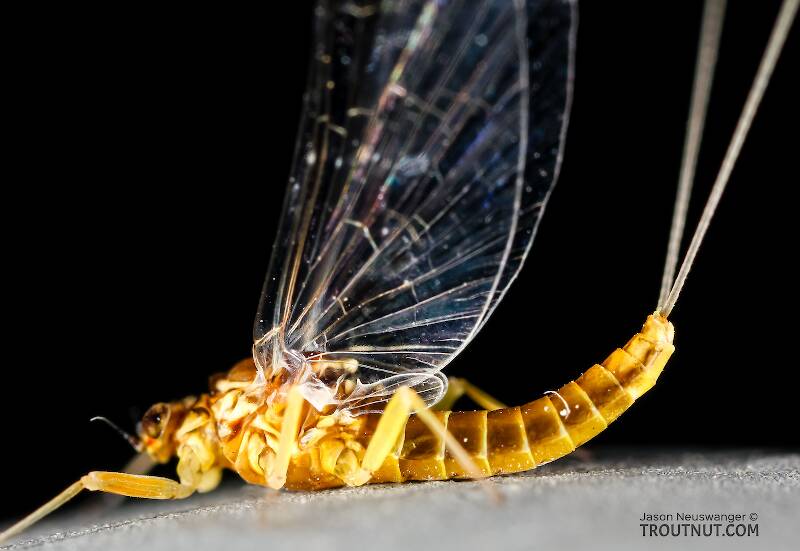
Salmonflies
Pteronarcys californica
The giant Salmonflies of the Western mountains are legendary for their proclivity to elicit consistent dry-fly action and ferocious strikes.
Featured on the forum

Troutnut is a project started in 2003 by salmonid ecologist Jason "Troutnut" Neuswanger to help anglers and
fly tyers unabashedly embrace the entomological side of the sport. Learn more about Troutnut or
support the project for an enhanced experience here.
Identification: Key to Genera of Baetidae Spinners
Identification: Key to Genera of Baetidae Spinners
Error: Tried to access a key that isn't live.
Adapted from Merritt R.W., Cummins, K.W., and Berg, M.B. (2019)
This couplet refers figures (usually designated 'sf') from this source.
You will need the source (make sure to get the same edition!) to see them.
This couplet refers figures (usually designated 'sf') from this source.
You will need the source (make sure to get the same edition!) to see them.
| Option 1 | Option 2 |
|---|---|
Hind wings present with blunt costal projections 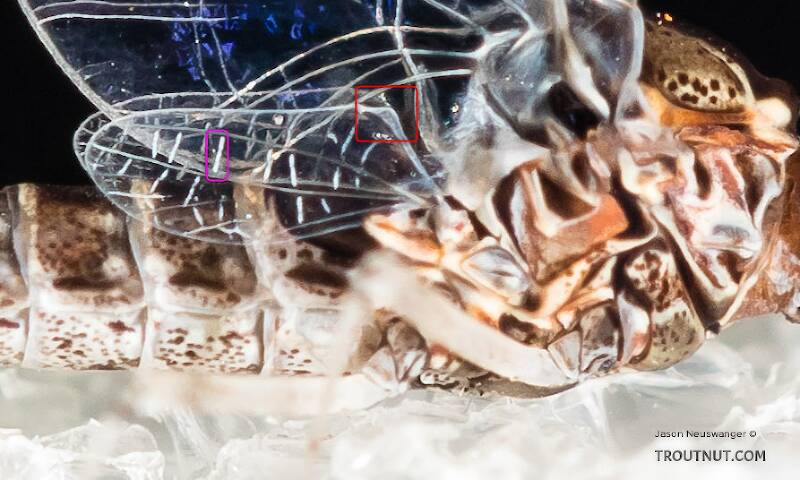
| Hind wings present or absent, but if present, then costal projections are never blunt, instead being either pointed (sf 13.210), hooked (sf 13.211), or absent (sf 13.212) 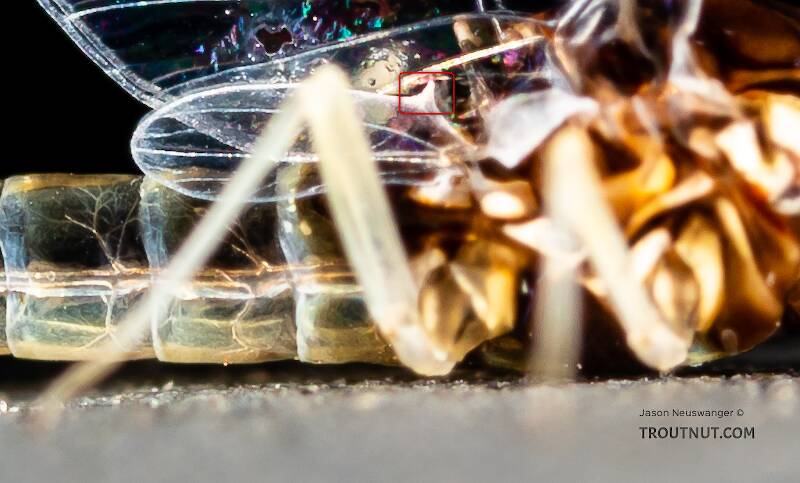
|
| Hind wings with ten or more crossveins | Hind wings usually with less than six crossveins |
Forewings of most species patterned 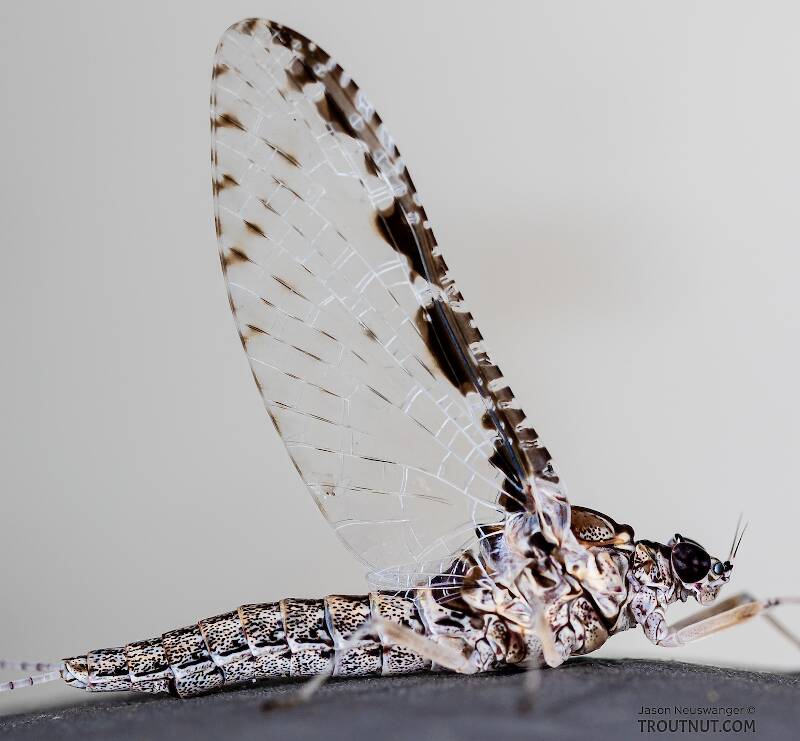
| Forewings of most species without patterns |
Abdomen with distinct dark speckles 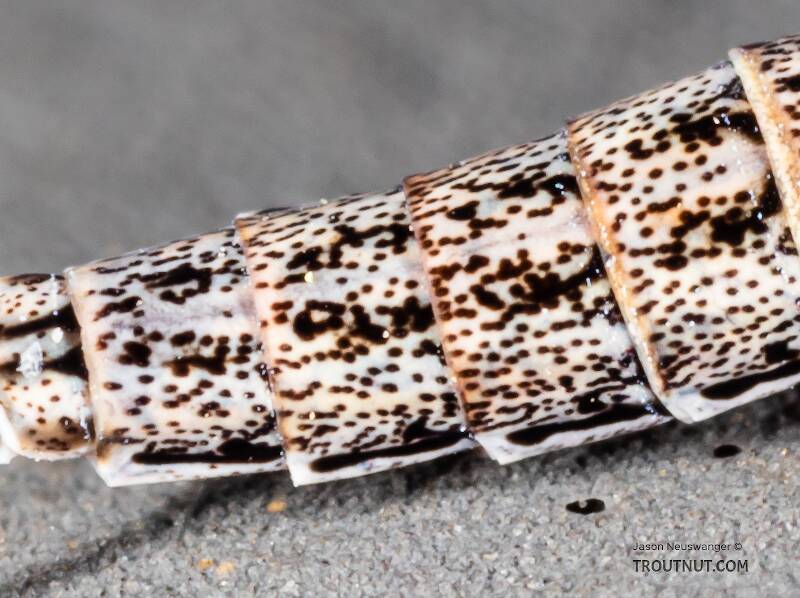
| Abdomen variable, but rarely speckled |
| Often found in great numbers in lakes or very slow-flowing rivers | |
| Remaining genera: Acentrella, Acerpenna, Americabaetis, Anafroptilum, Apobaetis, Baetis, Baetodes, Camelobaetidius, Cloeodes, Cloeon, Diphetor, Fallceon, Heterocloeon, Iswaeon, Labiobaetis, Moribaetis, Neocloeon, Paracloeodes, Plauditus, Procloeon, and Pseudocentroptiloides | |
5 Example Specimens | 5 Example Specimens |
| Callibaetis | Go to Couplet 2 |
Adapted from Merritt R.W., Cummins, K.W., and Berg, M.B. (2019)
The current couplet is highlighted with darker colors and a icon, and couplets leading to this point have a icon.
Couplet 1 (You are here)
Leads to Callibaetis:
- Hind wings present with blunt costal projections
- Hind wings with ten or more crossveins
- Forewings of most species patterned
- Abdomen with distinct dark speckles
- Often found in great numbers in lakes or very slow-flowing rivers
Leads to Couplet 2:
- Hind wings present or absent, but if present, then costal projections are never blunt, instead being either pointed (sf 13.210), hooked (sf 13.211), or absent (sf 13.212)
- Hind wings usually with less than six crossveins
- Forewings of most species without patterns
- Abdomen variable, but rarely speckled
Couplet 2
Leads to Couplet 3:
- Marginal intercalary veins of forewings occur singly
- Hind wings present or absent, but if present, then hind wings with costal projections hooked or recurved (similar to sf 13.211)
Couplet 3
Leads to Couplet 7:
- Marginal intercalary veins of forewings occur in pairs (sf 13.175a)
- Hind wings present or absent, but if present, then costal projections of hind wings variable but rarely hooked
Couplet 7
Leads to Anafroptilum:
- Segment 3 of male forceps more than twice as long as wide
- Spine-like process (sf 13.254) usually present between forceps bases
- Hind wings present (except for Anafroptilum minor, which lacks hind wings, but has small forewings about 3.0 mm long and black dashes on abdominal sterna)
Leads to Couplet 4:
- Segment 3 of male forceps usually less than twice as long as wide
- Spine-like process never present between forceps bases, but variably shaped penes covers may be present
- Hind wings present or absent
Couplet 4
Leads to Neocloeon:
- Basal segments of male forceps with distinct quadrate projections on inner margins
- Abdominal sterna of females with either dark lateral triangular marks or dark blotches
Leads to Couplet 5:
- Basal segments of male forceps variable, but without quadrate projections
- Abdominal sterna of females largely pale or variably marked, but not as at left
Couplet 5
Leads to Cloeon:
- Hind wings absent
- Male genitalia with distinct coniform penes cover between forceps bases
- Segment 3 of male forceps small and rounded
- In females, pterostigma of forewings tinted brown and abdominal sterna with lateral longitudinal markings
Leads to Couplet 6:
- Hind wings present or absent
- Male genitalia with rounded or rectangular penes cover between forceps bases
- Segment 3 of male forceps usually elongate (at most twice as long as wide)
- In females, pterostigma of forewings without brown pigment and abdominal sterna lack lateral longitudinal marks
Couplet 6
Leads to Camelobaetidius:
- Hind wings present
- Costal projections of hind wings present with broad bases (sf 13.213a,b) and acute apices
- Anterior margins of hind wings from wing articulations to apices of costal projections straight, producing characteristic shape of hind wings (sf 13.213a,b)
- Found in medium to large rivers
Leads to Couplet 8:
- Hind wings present or absent
- If hind wings present, costal projections present or absent, but if present, shape variable
- If costal projections similar to at left with acute apices, then costal projections lack broad bases such that hind wings are not shaped as at left (sf 13.214a,b). Fallceon thermophilos seems to be the one critical exception, having hind wings with small acute costal projections and broad bases producing a slightly modified, or elevated, wing margin. However, the terminal segment of male forceps of this species is at least half as long as the preceding segment.)
Couplet 8
Leads to Couplet 9:
- Anteronotal protuberance (ANp) of mesothorax conical with distinctly pointed apex (sf 13.256) or subconical with a slightly rounded apex
- Hind wings present or absent, but if present, then without a costal projection
Couplet 9
Leads to Couplet 11:
- Anteronotal protuberance (ANp) of mesothorax not distinctly conical or subconical, being instead often rounded and not projecting dorsally
- Hind wings, when present, with or without a costal projection
Couplet 11
Leads to Iswaeon:
- Hind wings absent
- Abdominal terga 2 and often 6 with median dark spot on anterior margin (also occasionally dark spots on terga 3-5; spots on terga can sometimes be quite faint)
- Abdominal sterna 2-7, 2-6, or 3-6 usually with a distinct single median spot
Leads to Couplet 10:
- Hind wings present or absent
- Abdominal terga 2 and 6 not marked as at left
- Abdominal sterna with or without distinct single median spots as at left
Couplet 10
Leads to Heterocloeon:
- Male genitalia as in sf 13.272, with basal segments of forceps having slight indentations along inner apical margins (inner margins of slide mounted material can appear to be almost straight because of chemical distortion produced by mounting media)
- Terminal segment of forceps inserted off center in the end of segment 2 (sf 13.272)
- Inner surface of segment 3 of forceps distinctly concave
- Hind wing present, but small to minute and usually lacking longitudinal veins (rarely with 2 longitudinal veins in Heterocloeon frivolum)
Leads to Acentrella:
- Male genitalia as in sf 13.273, with basal segments of forceps having broad distinct indentation on the inner margins (inner margins of slide mounted material can appear to have only a slight indentation because of chemical distortion produced by mounting media)
- Terminal segments of forceps inserted in the center of the end of segment 2 (sf 13.273)
- Inner surface of segment 3 of forceps not concave
- Hind wings present or absent, but when present, usually with only 2 longitudinal veins
Leads to Labiobaetis:
- Hind wings present
- Hind wings without costal projection (sf 13.212) or with greatly reduced costal projection
- Terminal segment of male forceps small and rounded
Leads to Couplet 12:
- Hind wings present or absent
- Hind wings, if present, with a distinct costal projection
- Terminal segment of male forceps variable
Couplet 12
Leads to Fallceon:
- Hind wings present with costal projections (sf 13.211) hooked or straight
- Terminal segment of male forceps elongate in North American species, at least half as long as preceding segment
- Bi-lobed process present between bases of male forceps (except in Fallceon thermophilos, which has hind wings with broad costal projections producing modified, or slightly elevated, wing margins distal of costal projections)
- Margins of hind wings distal of costal projections not modified (i.e. not elevated)
Leads to Couplet 13:
- Hind wings present or absent, but if present, then costal projections acute and not hooked (only rarely appearing slightly curved)
- Terminal segment of male forceps variable
- Bi-lobed process absent
Couplet 13
Leads to Apobaetis:
- Prominent coniform penes cover present between forceps bases, extending nearly two-thirds the length of forceps bases
- Male compound eyes nearly contiguous posteriorly and widely divergent anteriorly (when viewed dorsally)
- Hind wings absent
- Rare
Leads to Couplet 14:
- Penes cover reduced to a low rectangular mass or absent
- Male compound eyes variable
- Hind wings present or absent
Couplet 14
Leads to Diphetor:
- Hind wings with second longitudinal vein forked (sf 13.257), with the vertex of fork proximad toward the wing base
- Terminal segment of male forceps elongate
Leads to Couplet 15:
- Hind wings present or absent, but if present, then hind wings with second vein either simple or forked with vertex of fork distally beyond the middle of the hind wing (some individuals of Baetis magnus and Baetis diablus may key here, with small round terminal segments of the forceps)
Couplet 15
Leads to Acerpenna:
- Hind wings present
- Costal projections acute and prominent (similar to sf 13.213a,b, but with curved anterior margin preceding costal projections)
- Margins of hind wings distal of costal projection modified, or slightly elevated (sometimes described as "undulate")
- Terminal segment of male forceps about four times as long as wide
Leads to Couplet 16:
- Hind wings present or absent
- If hind wings present, costal projections variable, not acute or prominent as at left
- Terminal segment of male forceps variable
Couplet 16
Leads to Couplet 17:
- Male forceps with distinct mesal projections on segment 1 (sf 13.258 and 13.259)
Couplet 17
Leads to Couplet 18:
- Male forceps without distinct mesal projections as at left, or with a slight bulge at the position where mesal projections would occur (sf 13.264)
Couplet 18
Leads to Moribaetis:
- Hind wings present with 2-3 veins and costal projections (sf 13.160)
- Forewings with brown shading around discal crossveins (sf 13.260)
- Male genitalia as in sf 13.259
Moribaetis
Leads to Baetodes:
- Hind wings absent or vestigial
- Forewings with brown shading restricted to costal and subcostal areas
- Male genitalia as in sf 13.258
Baetodes
Leads to Couplet 19:
- Hind wings absent, or if present, then small and slender with only two longitudinal veins
Couplet 19
Leads to Couplet 20:
- Small species with forewing length 2.5-4.5 mm
- Terminal segment of male forceps at least twice as long as wide
- Male genitalia without small rectangular plate between forceps bases
Couplet 20
Leads to Couplet 21:
- Larger species with forewing length greater than 4.0 mm
- Terminal segment of male forceps not elongate, about equally wide and long
- Male genitalia usually with small rectangular plate between forceps bases
Couplet 21
Leads to Paracloeodes:
- Basal segment of male forceps large and cylindrical (sf 13.262)
- Terminal segment of male forceps about 2.5-3.0 times as long as wide
- Hind wings absent in known North American species, but adventive Neotropical species may occur in Mexico and the U.S. Southwest that may have small slender hind wings with 2 longitudinal veins
Leads to Americabaetis:
- Basal segment of male forceps large, with sides tapering toward base of segment 2 (sf 13.261)
- Length of terminal segment of male forceps only about 2.5 times as long as wide
- Hind wings absent
Americabaetis
Leads to Cloeodes:
- Segment 2 of male forceps with distinct inner bulge (sf 13.263)
Cloeodes
Leads to Couplet 22:
- Segment 2 of male forceps without distinct inner bulge
Couplet 22
Leads to Plauditus:
- Male forceps strongly curved (sf 13.264)
- Male genitalia with small rectangular or trapezoidal plate between forceps bases (plate may with withdraw and not be visible in preserved specimens)
- Abdominal terga 3 and 4 strongly pigmented with red medially, while terga 5 and 6 are lightly washed in red (red pigment fades rapidly after preservation)
Start a Discussion of this Couplet
References
- Merritt R.W., Cummins, K.W., and Berg, M.B. 2019. An Introduction to the Aquatic Insects of North America (Fifth Edition). Kendall/Hunt Publishing Company.
Genera excluded
These genera of Baetidae are not included in this key: Kirmaushenkreena, Barbaetis, Pseudocloeon, Varipes, Baetopus, Waynokiops



